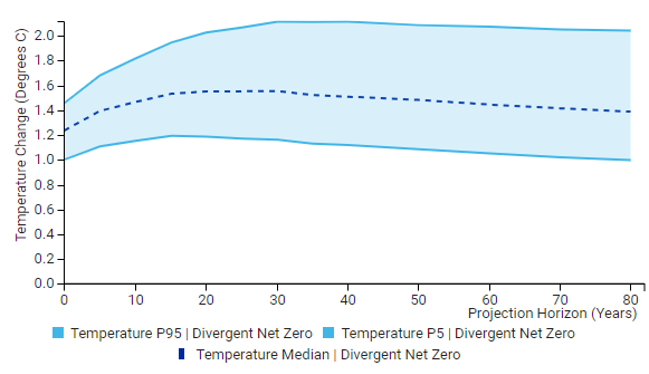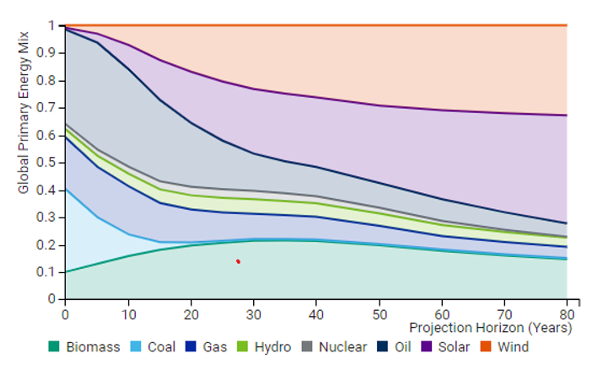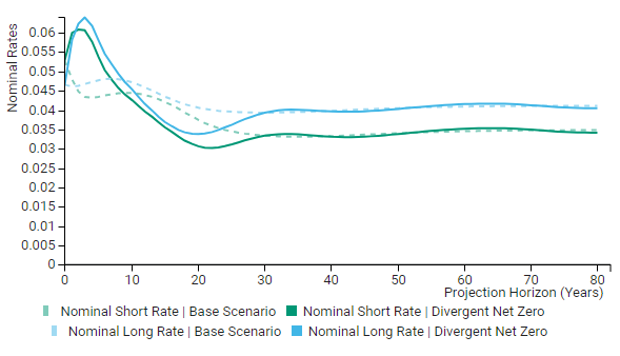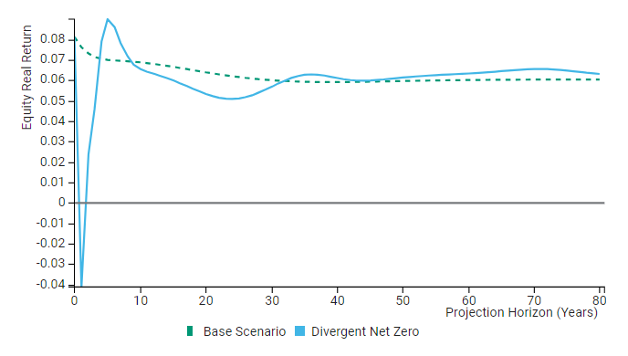Overcoming data overload: How can insurers embed climate risk within their asset allocation framework?
- Phil Mowbray |
- Senior Director |
- Moody's Analytics
For insurers, access to dependable climate data and scenario models is essential for supporting a wide range of business-critical activities – from Own Risk Solvency Assessment (ORSA) and stress testing to strategic asset allocation (SAA). Yet some insurers are discovering that there can be “too much of a good thing”.
When it comes to responding to solvency capital requirements, regulators are encouraging insurers to use either highly precise or complex models to reflect climate risk in their long-term financial risk management strategy. And here lies the rub: for insurers, the adoption of complex models might generate vast amounts of data. But is the data truly relevant? Does it uncover meaningful insights? In worst-case scenarios, these complex models may even cause spurious precision in the analysis.
Here, Moody’s climate scenario analysis tools simplify the process and deliver valuable insights that can support strategy asset allocation decision making for insurer’s investment portfolios. Climate Pathways, for example, is a Moody’s web application that allows users to investigate a range of published climate scenarios in order to construct projections for temperature, energy mix, macroeconomic factors and a range of sector level asset returns. As a result, users can access clear analysis relevant to their goals and requirements.
Incorporating climate considerations into strategic asset allocation
For the purposes of strategic asset allocation (SAA), the complex and granular models that may be required to support ORSA or capital stress testing may be of limited value. Strategic asset allocation decisions need to be informed by consideration of broader, systematic impacts on financial markets exposures; yield curves, inflation, credit spreads, risk premia, and asset class returns.
Integrated Assessment Models depend on important assumptions regarding links between climate, energy mix and associated macroeconomic factors. Since climate scenarios mustn’t be treated as forecasts, it will be important to investigate the sensitivity of any conclusions made about investment strategy based on climate scenarios and model assumptions.
Exhibit 1 shows a selection of these outputs for the USD economy, based on a Divergent Net Zero scenario (DNZ). This DNZ scenario is characterised by modest temperature increase and physical risk, but significant short-term inflation driven by increases in carbon pricing and higher costs associated with a rapid change in energy mix and transition to green technologies.
Exhibit 1: Climate Scenario Analysis – Divergent Net Zero (DNZ)
The model translates these climate, energy, and macroeconomic factors into returns for a range of industry sectors. Exhibit 2 shows the impact of the chosen climate scenario (Divergent Net Zero) relative to the baseline (Current Policies), for a select subset of industry sectors. Using this analysis, investors are able to understand macroeconomic and asset return impacts across a range of different climate scenarios under different modeling assumptions.
Exhibit 2: Sector-level equity excess return (vs. Baseline)
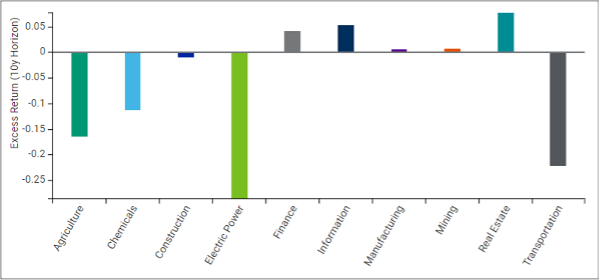
How can these climate scenario tools be applied within the SAA process?
The climate-adjusted scenarios shown above can then be used to stress the SAA analytics as they relate to an insurer’s projected net cash flow over a long-term time horizon. Moody’s PFaroe Insurance solutions inputs the climate scenarios to deliver SAA best case insights. The stochastic scenarios within PFaroe Insurance can be recalibrated, with assumptions adjusted for key risk factors such as yields, inflation, credit spreads and asset returns, reflecting the capital market characteristics of the chosen climate scenario. These powerful analytics help streamline climate scenario modelling and supports SAA decision making for investors who manage insurers’ investment portfolios.
Using our PFaroe Insurance solution, analysts can assess the sensitivity of any investment strategy to a range of Climate Scenarios (e.g. Delayed Transition, Divergent Net Zero, Net Zero 2050, Below 2°, etc.).
With PFaroe Insurance, you can determine how:
- The insurer’s risks or objectives are impacted by different climate scenarios
- The chosen investment strategies remain optimal, or near-optimal, across different climate scenarios
- Various climate scenarios would impact the distribution of relevant risk metrics (including net cashflow, and capital)
- The business is exposed to more extreme tail risk
- The chosen strategies or funds are susceptible to a particular climate scenario
- A monitoring and risk management process could be implemented to review or adjust the investment strategy in the event that a particular scenario became more likely.
- From an asset manager or investment adviser’s perspective, climate analysis is reflected in an investment offering to insurers.
For further information on our solutions, please visit: https://pfaroe.moodysanalytics.com/
